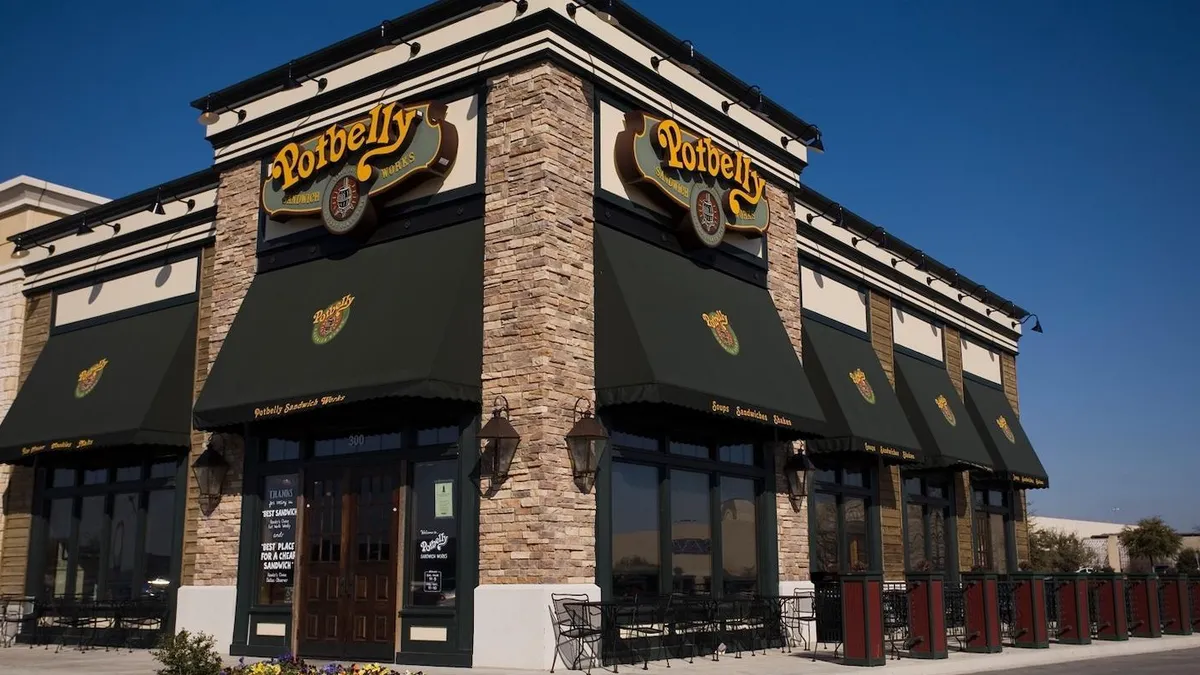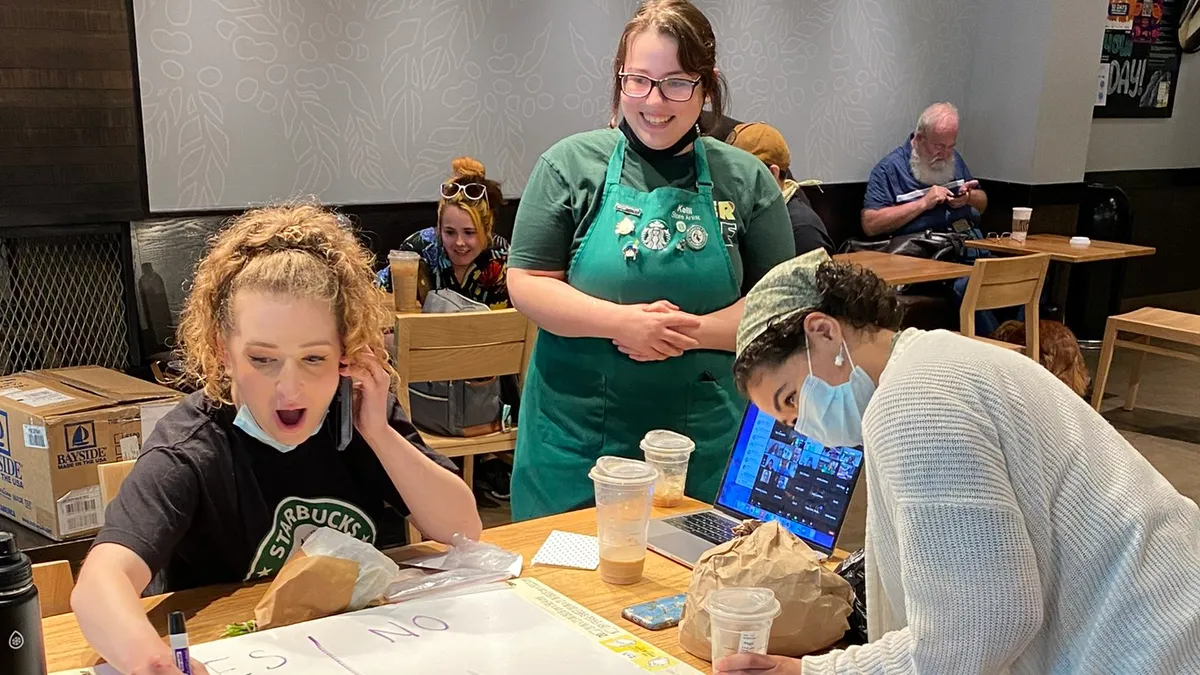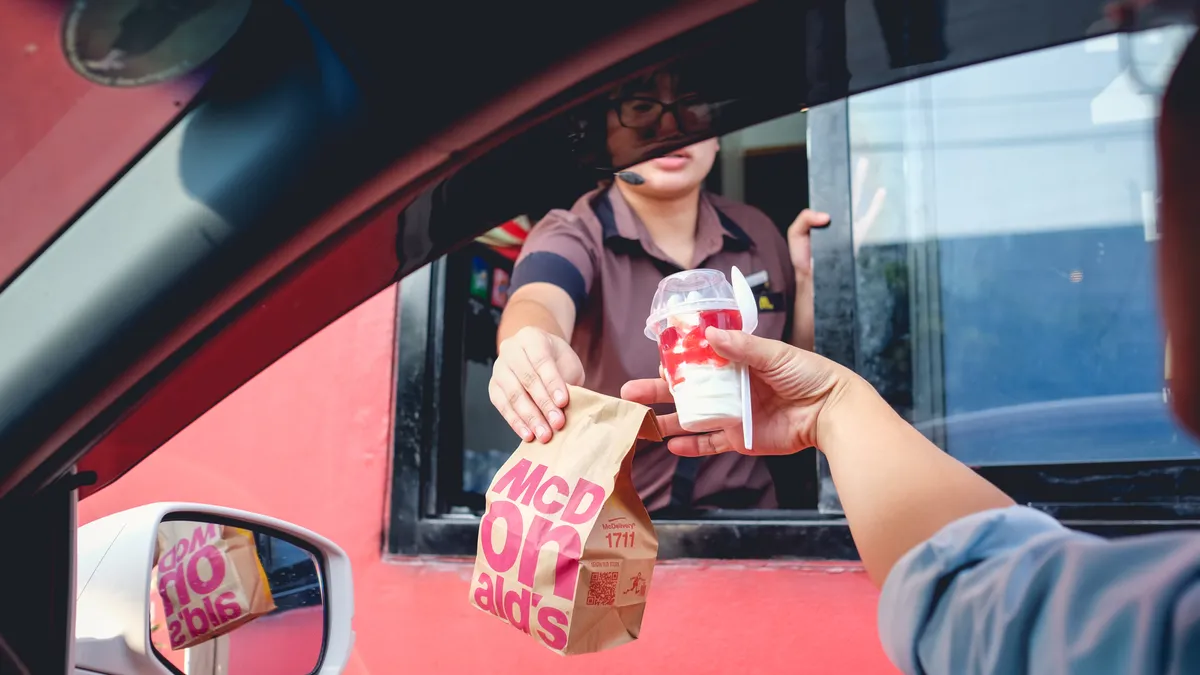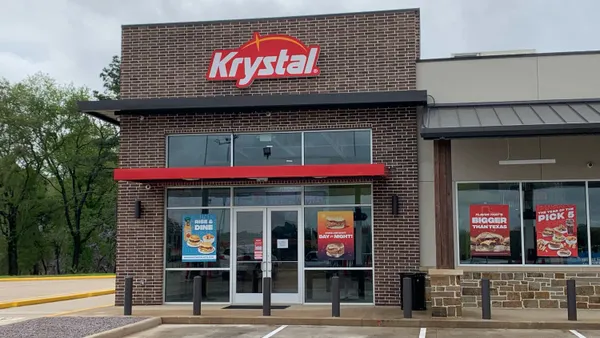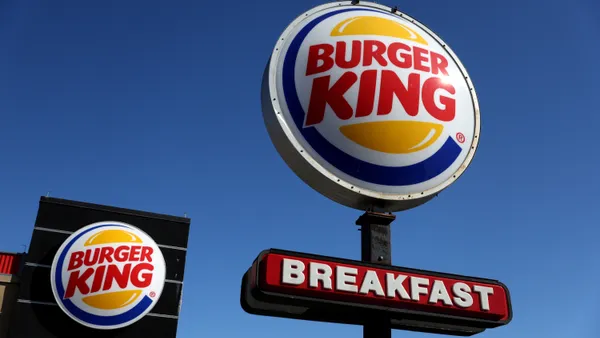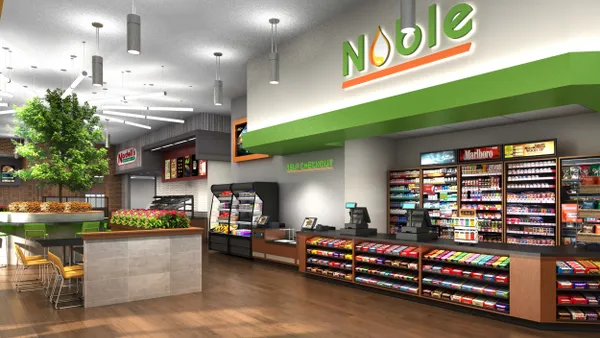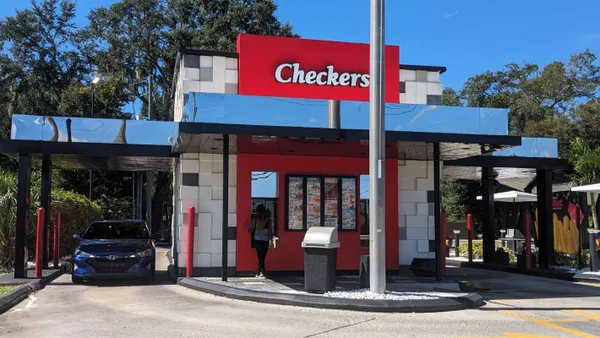Potbelly has an ambitious growth plan. While it has over 440 units in the U.S., its franchisees have signed commitments that would bring its domestic total to over 720 restaurants. That means within the next few years it could add nearly 300 American units. The chain has 38 sites in various stages of development expected to open this year in the U.S., CEO Bob Wright said in an interview during the ICR Conference in January.
“We’re excited about it,” Wright said. “That would be about a 50% increase over last year and that’s if we aren’t able to add a few more along the way.”
All of the new locations will be built to match the chain’s new prototype, an 1,800-square-foot store with new decor, and a digital back of house dubbed Potbelly Digital Kitchen. In addition to this model, which is 500 square feet smaller than a traditional Potbelly restaurant, the chain also has developed a systematic real estate process that allows for multiple stores to be developed at the same time — accelerating its new store openings, Wright said.
Restaurant Dive interviewed Wright about the chain’s accelerated growth rate, plans for territory expansion and its work with franchisees to ensure it can maintain its current momentum.
Editor’s note: This Q&A has been edited for brevity and clarity.
RESTAURANT DIVE: How do you determine the best sites for franchised locations?
BOB WRIGHT: When a franchisee signs a multi-unit development agreement, they get an exclusive territory, and then within that territory, we custom-design that map to fit the size and the scale that we believe and they believe they're capable of developing. Most franchisees don't even see themselves developing 25 to 35 units. So we may start with six or 10, or in one case, in East Texas, it was three because that was the size of the market.
Within the exclusive territory, we have predetermined targeted trade areas that are rooted in the data analytics from all of our existing locations. Within days of signing their agreement, franchisees will be in the field with our real estate league team and broker.
The brokers aren’t offering up what's available, which is the most common experience for franchisees of retail and restaurant brands. They are instead being sent with a hunting license for very specific targeted areas. Because they have the whole map, they literally start searching all those trade areas at the same time.
The path to slow growth, which is not the one we want, is to try to find a site, take down the site, start construction, and then when you get close to opening, go try to work on site number two. Operators never get a site a year if you use that process.
Where do you see unit growth potential, and what kind of white space do you see for your smaller prototype?
From the time we sign a development agreement, we expect an operator’s first unit to be open in less than a year. We only expect that because we engineered the process to be able to deliver that. It used to take longer. We've created very systematic steps along the way.
The other thing we do is in that development agreement with the franchisee, we have contracted for each location. We don't know which address it's going to happen at, but for each location, there is a lease control date that they must abide by and an open date that they must abide by. They have to stay on track in order to preserve that exclusivity and to preserve the development agreement.
What allows us to accelerate that? This smaller prototype model that we have is a starting place. By searching for a target of 1,800 square feet, it opens the aperture a little bit on what's available out there. If you must have a 3,500-square-foot location or 2,800-square-foot location, it's a much shorter list of inventory that you can move into. Brokers now have more opportunity to find those places, and it can accelerate things.
The other thing about acceleration through franchising is, we didn't sign one franchisee to build 200 units. The franchisee in Texas that signed for three is developing right alongside somebody in Orlando, Florida, who signed up for 12.
More and more franchise development agreements means more people developing at the same time. We've signed multiple different franchisees in Florida. We've signed multiple franchisees in Texas. Once they get past that first site and the next site, they start rolling, and before you know it, you fill these markets.
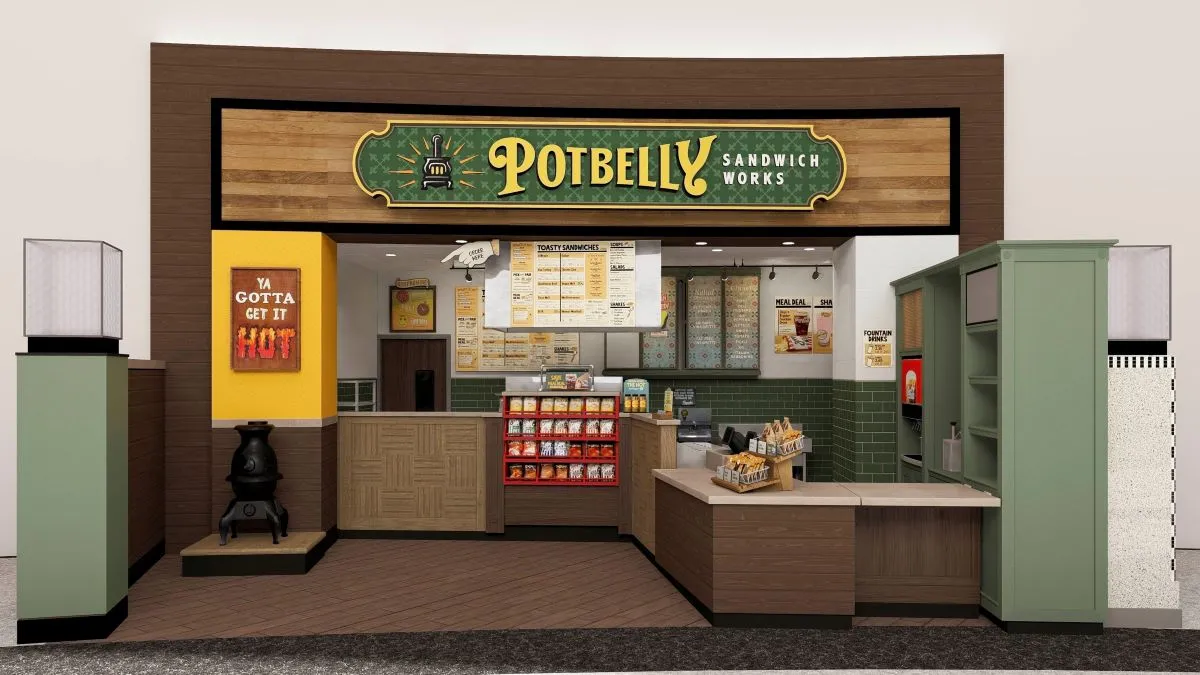
Have there been any adjustments based on what you've learned from the initial openings of those small prototypes?
We got a lot of it right on the front line — the way the line flows, where the beverage stations are, the fit of the grab-and-go beverages. The dressing station, where we top the sandwiches, is now a custom piece of equipment. It’s one piece of refrigeration instead of three. It’s more efficient from an energy perspective, and it’s easier to operate. We did some work on the shake station to make that more efficient, too. I think there'll be a few tweaks there.
We're not going to miss the chance to build a few company locations along the way, too, because we can learn about construction methods. We can learn about the fit and finish of certain things.
We've got wood wainscoting, for example, that in the prototype was installed by the contractor. In various parts of the country that can be a huge variable for construction costs. If it's an expensive market for contractors, if it's a union market for contractors, if it has to be stained by one group when it is installed by another group, the cost starts to go crazy. So maybe we can panelize that system and deliver it, and then just simply have it installed as a piece. Those are things we have still ahead of us. So there’s cost extraction, things like unique design and construction elements that are maybe a tad complex for a framing carpenter, that don't need to be complex. So we're finding those things.
It's only to the extent that it won't affect the customer experience, though, and that's what's still ahead of us with the prototype.
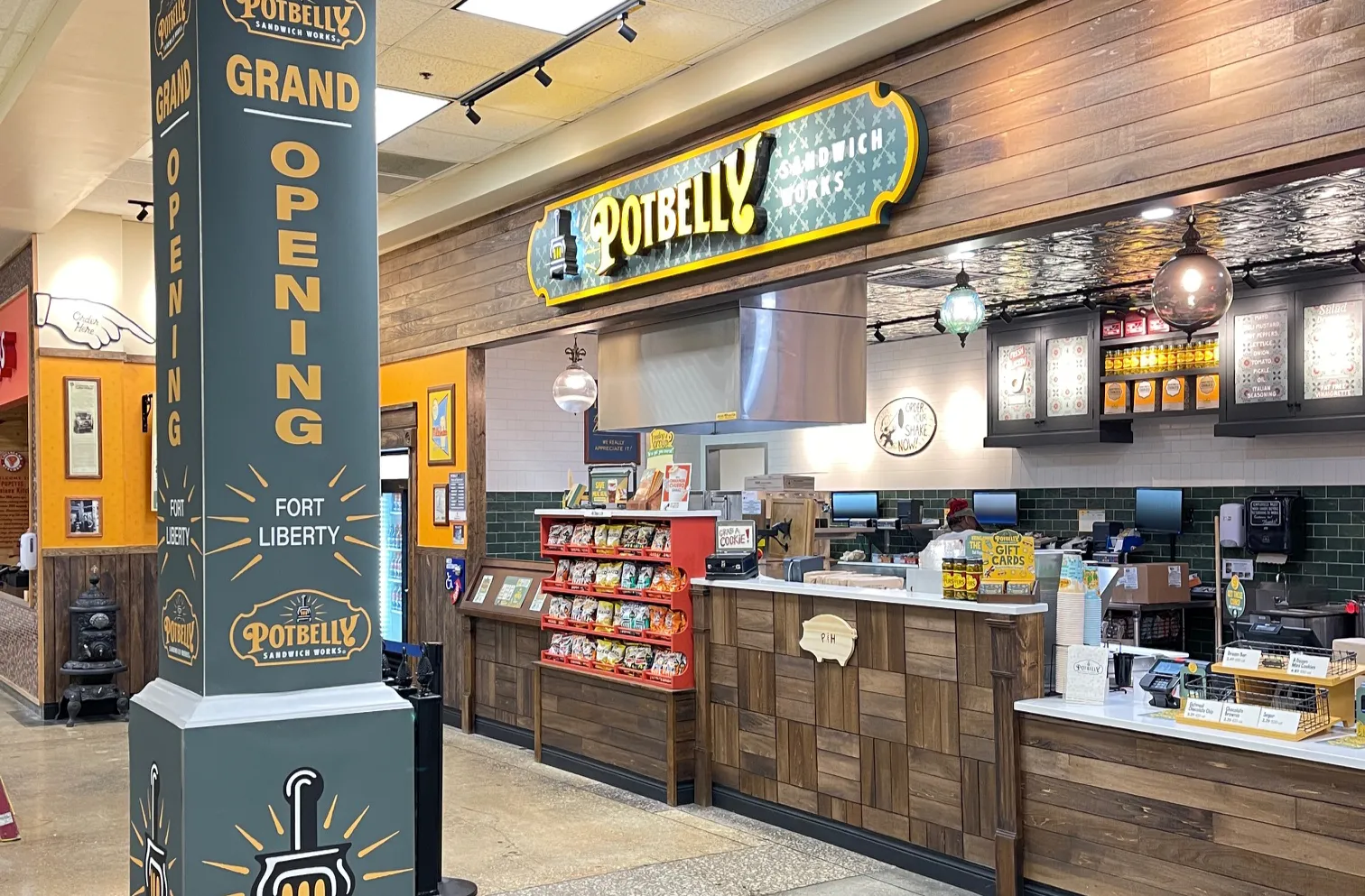
How are you thinking more about opportunities in non-traditional areas now that you have this very flexible prototype?
We still think those are huge opportunities for us. I personally have experience with other brands in non-traditional spaces, international spaces and a lot of experience on military bases. First of all, they can be terrific operations. Franchisees that operate in those places love it. We've got company-operated airports we love. They're very profitable, high volume. But especially as a franchisor, they're brand builders. You get mountains of traffic at Dulles International Airport, for example. We have two in Dulles, and one of them is one of the highest-volume locations in the whole system.
And then we have the military relationship that we're nurturing. It seems like it's going to be really fruitful for us. We’ve got a franchisee that's already on a military base, and the pride in serving that customer is unique. It's special.
What regions or markets are you targeting for development?
We’re open to developing almost everywhere. One of the biggest restrictions in systemwide development for a franchise brand like ours is the challenge you have with food supply delivery. Our distribution network is run through a broker system, and we have regional distribution companies all around the country, with the exception of California. So if we were to add a franchisee in California, we'd have to solve for that, and I'm sure we could. But aside from that, we could take incoming inquiries from just about anywhere in the lower 48 and be able to sign a deal and be able to support that franchisee growing.
There was a time when Potbelly would never welcome a franchisee into a market that was a company-operated market. We have company units in Dallas, Houston, Austin and San Antonio, and that basically meant Texas was off-limits for franchisees. We have not penetrated any of those markets, and not even close in some cases.
In my experience, I've never operated a brand where you didn't have commingled markets everywhere, company and franchise units operating right alongside one another. So the franchisee development team is bringing in additional franchisees to further penetrate those markets where we had very poor penetration, primarily in the Southeast.
We've had a lot of success selling in Florida. We put some effort into that. We recently signed our first deal in Alabama. So you can see us creeping across the Gulf Coast. We signed a deal in Atlanta, Georgia. There isn’t a single Pobelly shop in Georgia today.
How are you thinking about that franchised and re-franchising mix going forward?
We’re almost exclusively focused on franchising. We have re-franchised 34 units over the last two years, and we’re open to it on a very minimal basis. We need exactly the right combination of multiple variables to make a refranchising deal attractive to us. It would have to be a small number of refranchised units for a pretty large number of development commitments to go with it. It would have to be in a market where we have other business reasons that we'd be willing to, or maybe even want to, exit, because we're happy to let someone come alongside us and develop. There may be some other factors of geography or leadership span. You put all that together, it's got to be the right franchisee. Then we would be willing. But for now, it's going to be a very small number.
Have your improved financials helped your development planning and attracting franchisees?
The company’s super healthy. We've got a very healthy balance sheet with very little debt. We are a net-income positive and EBITDA-positive company. We're a positive cash flow company. When we talk about investments like developing the prototype, or the new Potbelly Digital Kitchen or other digital investments, we have the wherewithal to do that, to keep pushing the business at the unit level, growing topline sales and expanding margins.
For franchisees, we’re keeping the investment costs down. At least from a financial perspective, they're going to be excited about growing. We’ve had some of the healthiest years we've had as a company in a long, long time.
Where do you see Potbelly in terms of development and growth over the next few years?
Our long-term growth algorithm is to be at a minimum of double-digit compound annual growth rate at the unit level. We sold more than 100 units in 2024 to multiple franchisees that are going to develop at the same time — never mind the ones we sold in 2023 that are also still in development. That's exactly how we expect that compound growth rate to actually grow and, of course, the number of units gets better and better and better every year.



